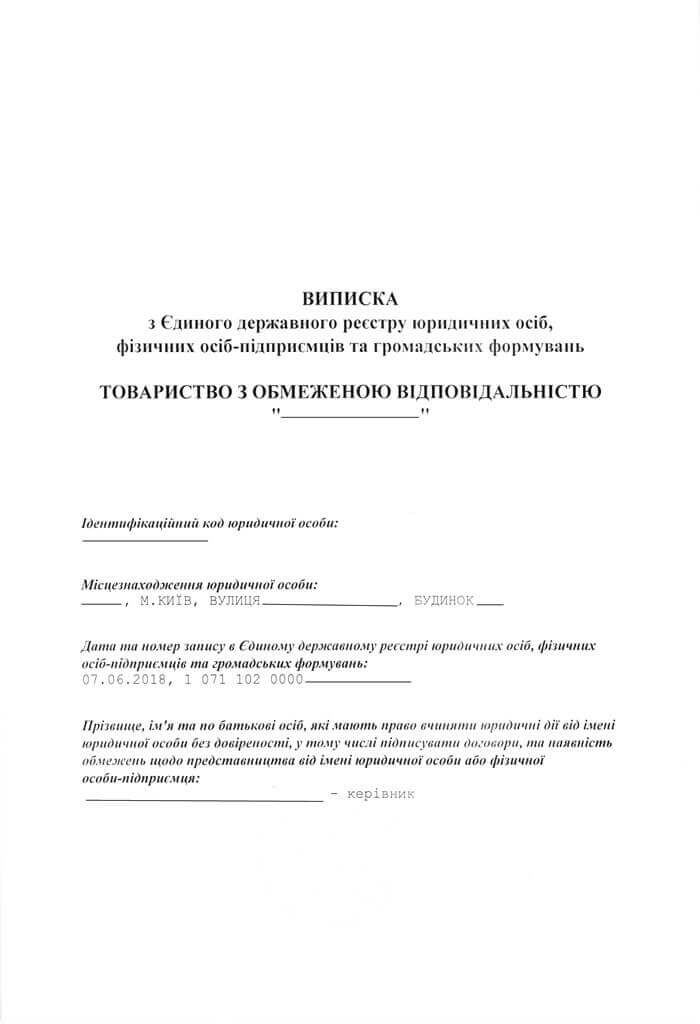How to make your business financial model work?
Cost of services:
Reviews of our Clients
... our work on joint projects assured us of your high level of professionalism
The success of any business largely depends on the quality of its management. Thus, the financial aspect of each process plays a critical role in managing a company.
Starting a business involves forming an idea, creating a business plan, and developing a financial model. We discussed these tools in more detail here.
A thriving business is constantly evolving and improving its processes. This is why periodic auditing and updating of the financial model is essential.
To illustrate the importance of this audit, let's take a real-life example of one of our clients.
Audit of a business's financial model
The CEO of a pharmaceutical manufacturer approached us. Together with the finance department, Together with the finance department, they described financial processes and developed a budgeting and forecasting system in the company a year ago.
They also developed a prototype of the financial model and a mechanism for operational tax forecasting were developed. The prototype was automated using an accounting system.
However, due to a lack of monthly analysis of managerial and accounting data by finance and accounting department employees, the actual performance of managerial and accounting records at the end of the financial year differed from the forecasted data by a significant margin of 20%, whereas the norm for deviation from forecasted data is 2-5%. This raises the question: “Is it an error in accounting or forecasting?”
The main mistakes made when creating a financial model include:
- Unrealistic financial data – ambitions are great, but they should be 90% based in reality. Inflated income or underestimated expenses and a "catchy financial plan" won't help you reach your goal if the numbers aren't realistic;
- Lack of reserves – a financial model should have reserves expenses of 10-15% of the total expenses. This will help the business use reserves in case of unforeseen circumstances;
- Lack of forecasting dynamics – statistical data and forecasting dynamics are important elements of a financial model. These indicators help to understand which factors affect various aspects of the business;
- Lack of risk assessment – no business can be risk-free, so the owner must not only be aware of the risks but also factor them into the financial aspect;
- Lack of commercial benefits – if you plan to obtain credit or investment funds, you must clearly understand how to use them, instead of simply providing a "number out of your head";
- Failure to consider all business processes/calculations – or example, when forming the business model of a holding/corporation/multiple related entities, don't forget to consider internal settlements between the companies.
To address our client's issues, we have conducted:
- Express audit of accounting and tax accounting – we reviewed the accuracy of determining revenues, expenses, and calculating corporate income tax.
- Express analysis of financial processes – we reviewed the financial processes and their involvement in the calculation of corporate income tax (whether all operations are subject to taxation and included in revenues/expenses).
- Analysis of the financial model prototype and forecasting – we reviewed the accuracy and logic of the model's calculation.
After conducting an audit and analysis of financial processes and models, we discovered several key inconsistencies, namely:
- the financial model did not include data (such as income, expenses, accounts receivable and payable) from intra-group settlements;
- company processes that began after the financial model was developed were not factored into calculations, meaning the model was not up-to-date.
These errors indicate that while the financial model was developed, there was no responsible party designated to oversee its implementation.
A financial model is a tool that helps manage a business, and for it to be used effectively, there must be someone responsible for daily monitoring of actuals versus plans (usually the financial manager). Otherwise, the business will revert to just tracking for tracking's sake.
Please note! If a company has processes that differ between management and accounting, they should be described and included in the list of discrepancies in the financial model calculations. This will enable quick response to data deviations from the norm and reduce time spent searching for errors by both financiers and accountants.
In this article, we will explain how we helped our client improve their financial model.
You may also like: Mastering Your Company's Finances: The Power of Budgeting and Financial Flow Control
Step 1. Settlements between holding companies
Our client's main company is a manufacturer of medicinal products (hereinafter referred to as the drug manufacturer).
There are additional companies within the holding:
- A company that owns production facilities, which are used by the drug manufacturer;
- A distributor of the drug manufacturer's products;
- A network of pharmacies.
All companies collaborate with each other, and their financial settlements are carried out by the accounting department as the need arises. The financial department (management accounting) does not take into account the settlements between the companies, and 90% of the accounts receivable and payable are accumulated and not paid off.
We have proposed the following solutions:
1. Identify settlements between internal companies with a separate contract (this will allow for easy adjustments to the financial model and automate internal settlements).
2. Include settlements between internal companies in the management accounting data and financial model.
3. Set limits on accounts receivable and payable for each company (for example, at the end of the month, the debt cannot exceed 2 million UAH).
Please note! Unpaid accounts receivable and payable are reflected in the company's balance sheet. If the amount of accounts payable is significant (more than 5% of the balance sheet), investors/creditors/banks may question the reality and solvency of your business.
4. Create a schedule for paying off internal debts. Outline which payments are made regularly on a monthly basis, and which require additional financial approval. This will help avoid "dead" debts and irrational transfers of funds between companies. In other words, develop a payment calendar for internal settlements.
For example, the owner of the production facilities rents them out only to the pharmaceutical manufacturer.
The revenue from operations amounts to 3 million hryvnias per month, while expenses amount to 1.5 million hryvnias (utilities, salaries, and building maintenance costs).
Therefore, if the drug manufacturer were to fully pay off its debt for the rent services every month, 1.5 million hryvnias would be "frozen" in the bank account, which could actually be used by the drug manufacturer for business purposes.
In this case, it is appropriate to calculate the debts based on the actual expenses of the company, and pay off the remainder at the end of the year before distributing profits and paying dividends to the founder.
You may also like: Tax Planning for a Business in Ukraine
Step 2. Tax optimization through internal company settlements
During our tax accounting express audit, we noticed fluctuations in the tax burden between our client's companies, specifically:
- Drug manufacturer - 3%
- Property owner - 0.9%
- Drug distributor - loss-making activity
- Pharmacy network - 0.7%.
Please note! The tax burden is an indicator that shows how much tax is paid per unit of income.
The tax burden allows us to determine the "norm" of tax payment on profit. The norm is considered to be within the range of 0.8 to 1.2%. The tax burden is determined by the formula: profit tax / income.
Based on the above, we can see an overstated tax burden on the LS Manufacturer, while the distributor is operating at a loss and the pharmacy network and property owner have relatively low tax burdens.
Note: if a company's tax burden is greater than 1%, regulatory authorities will be satisfied. But for the company, this means an overpayment of profit tax, which could be used to develop the business.
That's why we developed a financial model for internal settlements for our client. It allowed us to effectively distribute the tax burden and achieve profitability for all businesses, resulting in tax optimization (profit tax reduced from 10 million UAH per year to 7 million UAH per year).
How did we achieve this?
1. Some of the manufacturer's products that were sold through distributors started to be sold directly from the manufacturer.
This allowed us to:
- Reduce the number of transactions between companies (from 1,000 transactions per day to 350 transactions) and simplify interholding accounting;
- Decrease the VAT tax burden (from 100,000 UAH/month to 47,000 UAH/month).
2. We restructured the staff allocation.
One of the issues was that employees were being placed in companies without considering their economic return. By redistributing staff (transferring employees from one legal entity to another), we were able to achieve:
- A logical connection between an employee's activity and the company in which they were legally registered;
- The profitability of the distributor's activity.
3. We developed a pricing policy for internal settlements
In order to redistribute profits between companies, we established standard prices for services/goods and documented them with:
- A company-wide order establishing prices between related parties.
- A calculation of the financial feasibility of using production facilities.
- Market price selection.
You may also like: Ukrainian Company Funded by Non-Resident Founder
Step 3. Developing a process change policy
We proposed to our client to develop a company policy that would be responsible for managing process changes. Its main objective is to ensure that no process can start until it is approved by the financial director.
The finance department must:
- confirm the feasibility of carrying out certain work/projects;
- prepare the accounting system and reports for the launch of innovations (e.g., calculate the cost of a new product instead of finding out after production);
- make changes to the accounting policy (if new processes/changes require it);
- make changes to the financial model.
This work helped the owner:
- identify deviations in the financial model;
- obtain mechanisms for managing the financial model and understanding the importance of accounting for all company changes;
- receive an express audit of activities, which pointed to the need for tax optimization;
- understand that accounting between internal companies is important for taxation and payment schedule;
- establish effective and tax-efficient mutual settlements between internal companies.
Our experts recommend conducting a financial model audit at least once a year.
Today, we are offering a unique opportunity for your business to gain insights that you cannot find on your own. We provide you with the expertise of professional accountants and lawyers who take your information and turn it into a working tool to optimize your business.
If you want to develop your own business, turn it into a systemic one, take one or preferably several steps forward, don’t hesitate to contact us.
The cost of developing a plan and a financial model or conducting an audit is formed individually for each client based on your goals and the scale of your business. We can always start with an introductory consultation to get to know each other.
You can find out more about the terms of obtaining it here.






